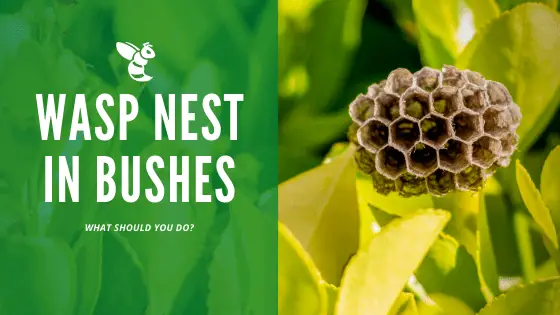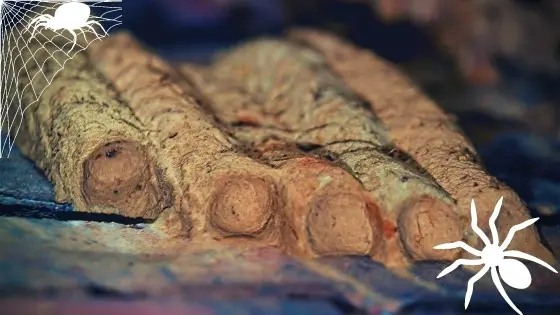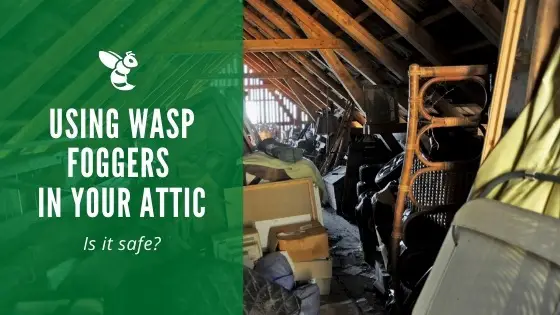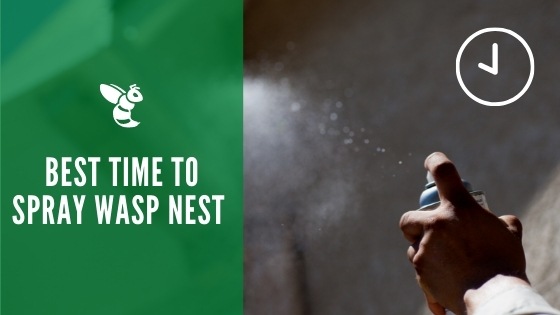Dealing With Wasp Nests in Bushes & Shrubs

Wasps like to build their nests in areas where a natural landscape can protect them. If you have a lot of bushes or shrubs in your yard that provide a thick level of protection, you might come across a wasp nest at some point.
If you do find a wasp nest in a bush, they’re going to let you know that your presence is unwelcome. Even if you don’t attempt to remove the wasps right away, they may come after you in the form of stings.
Do you know how to find a wasp nest in a bush? Knowing the right way to take care of the problem can keep you, your family, and your neighbors safe.
Bushes That Attract Wasps
If you’re trying to keep wasps away and are in the process of landscaping your yard, these are some items you may want to think about skipping.
Queen Anne’s Lace
Yarrow
A yarrow plant can grow up to 36 inches tall and very full in width. It’s a strong plant with potent flowers that attract wasps and bees.
Spearmint
Spearmint grows like wildfire. If you have thick bunches of it around your yard, wasps will become attracted to its smell. Ironically, you can use spearmint medicinally. It can be used to soothe the sting from a wasp that has become red and irritated.
Calendula
Another medicinal plant, calendula, is a favorite of wasps and bees. They love their beautifully colorful and sweet flowers. If you keep your calendula plant trim enough, you may be able to keep the wasps from building their nest around the area. They may come around to make a meal of the calendula’s nectar, though.
How to Get Rid of Wasp Nests in a Bush
Spend a little bit of time evaluating what’s going on with your landscaping. You can usually sit back (from a distance) and see where the wasps fly in and out. Don’t go poking around in the bush just yet.
Late at night and early in the morning are the points in the day when you can check the nest without having the wasps act overly aggressive. They’ll be pretty calm and resting inside. If you want to use something natural to repel wasps before making a nest, clove oil is a scent that they hate. Plus, it’s natural, so you don’t have to worry about harming the plant you’re putting it on.
Getting rid of a wasp nest in a bush is a little more complicated than if you found a nest hanging from the eaves of your house. Certain products can be harmful to your plants and bushes if you spray them.
You’ll want to look for something that is made with pyrethrin. This is a product that is entirely natural as it comes from the pyrethrin daisy variety. It works very quickly, it’s not toxic to humans, and it won’t harm your landscaping. You don’t have to be careful about where on the plant you’re spraying.
The roots, leaves, and branches can all handle pyrethrin spray. You’ll want to mix the product you buy with 3 to 5 tablespoons of concentrate fluid inside of 1 gallon of water.
How to Trim Bushes with Wasps
If you need to trim a bush that has a wasp nest inside, this is a tricky situation that you’ll want to think long and hard about. Wasps are aggressive, and they’re not going to be happy if you’re poking around their home.
While they may be calmer in the late evening and early morning, they’re still going to come out looking to sting you if they sense you’re nearby. If you plan on leaving the nest where it is, it might be a good idea to skip trimming the bush that year.
You can check back again next spring to see if the colony has died off during the cold weather months. You can also choose to remove the wasp nest before trimming the bush.
If you find a large wasp nest in a bush in your yard, it might be a good idea to call in a professional for assistance. If you’re prone to an allergic reaction to the sting of a wasp, or you don’t feel comfortable taking care of pests on your property by yourself, sit this one out.
The problem will be taken care of in no time so you can get back to enjoying your property and your yard.



